
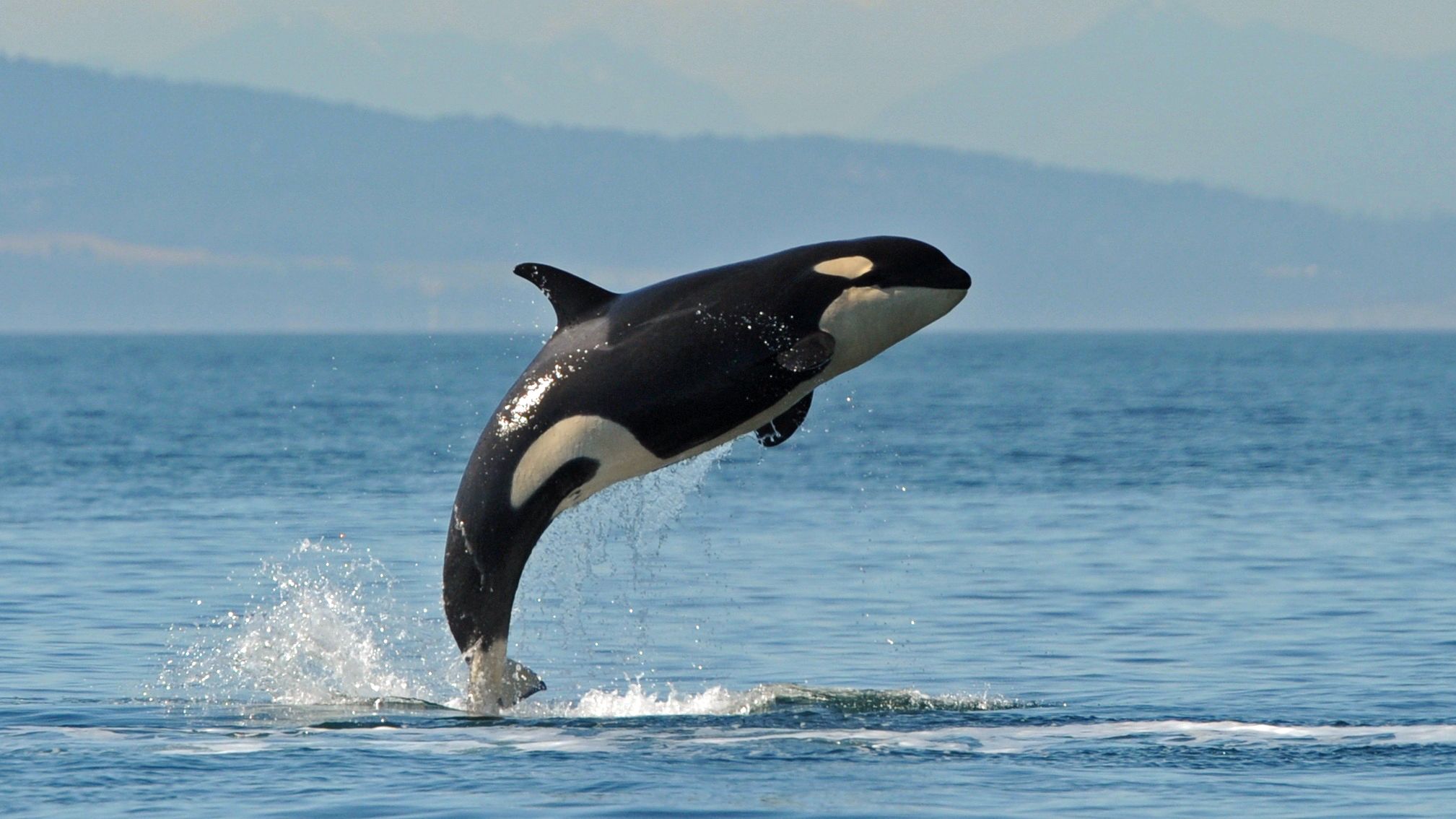
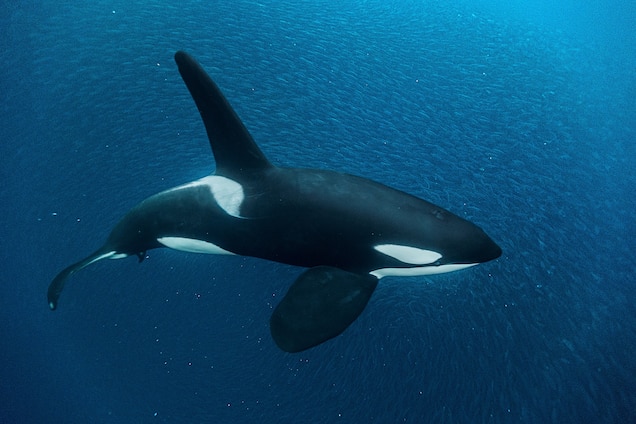
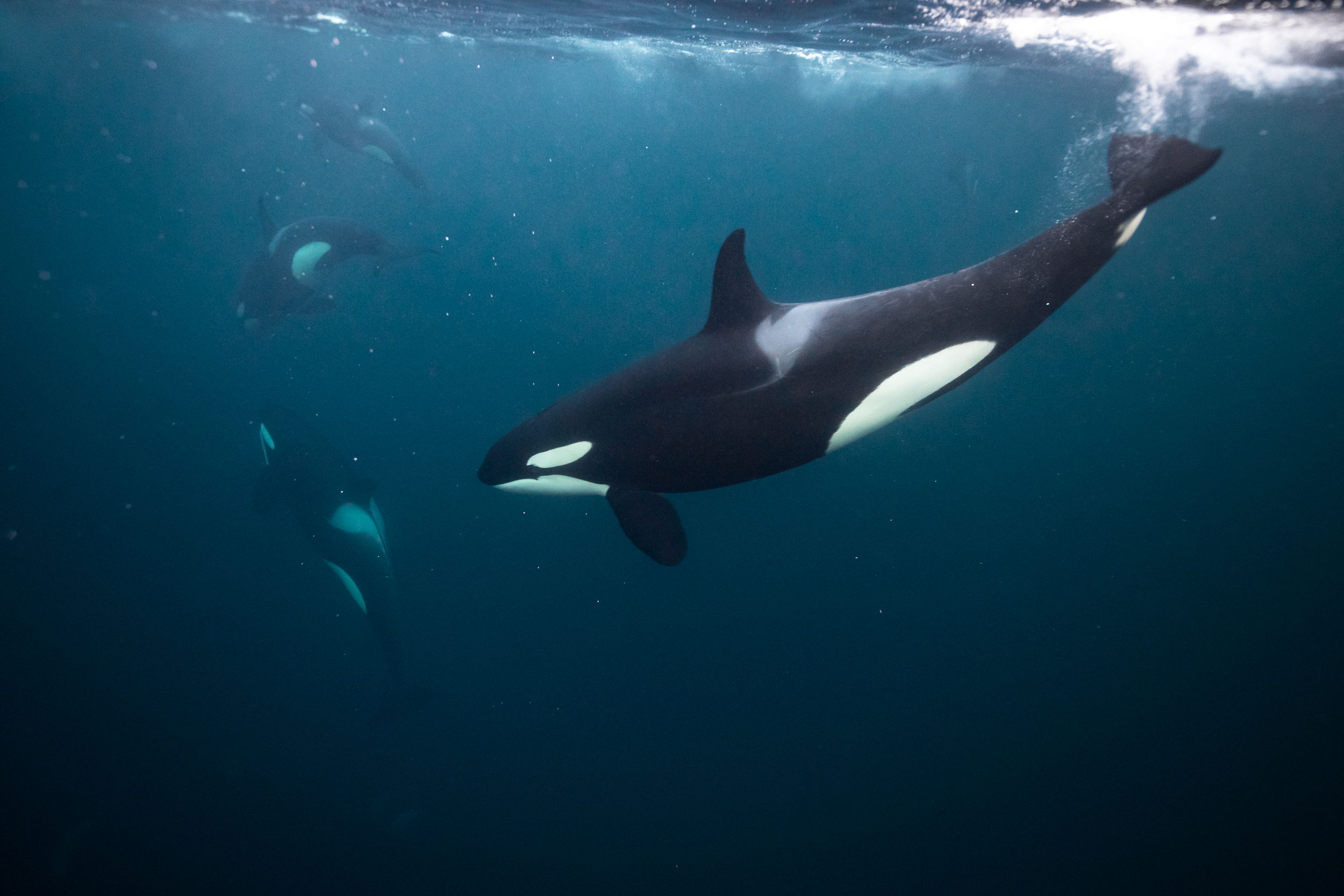
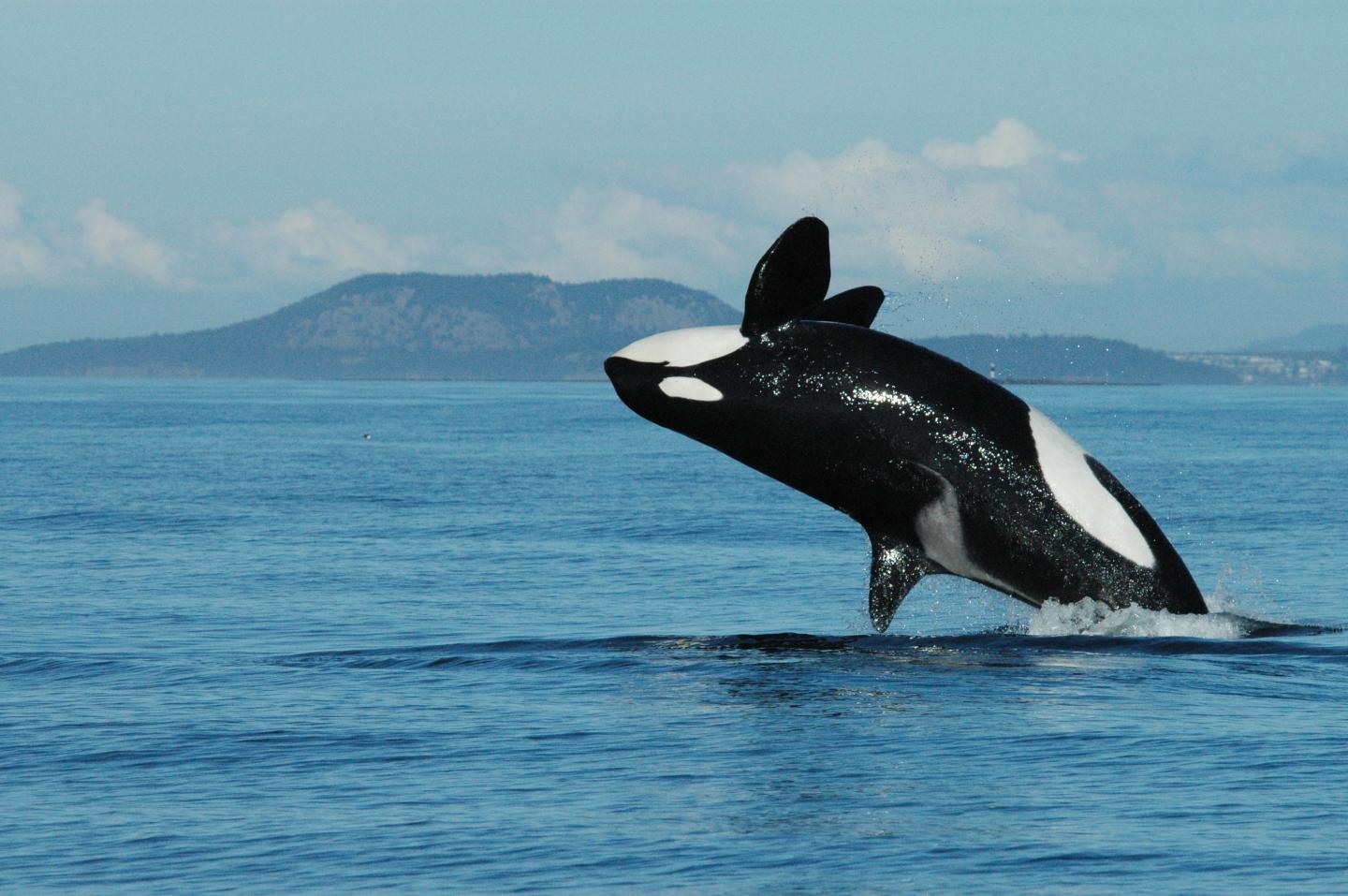

 Killer whales are found in all oceans. While they are most abundant in colder waters like Antarctica, Norway, and Alaska, they are also found in tropical and subtropical waters. |
 They feed on fish and squid like other odontocetes (toothed whales) do, but will also target seals, sea birds and even whale species far bigger than themselves |
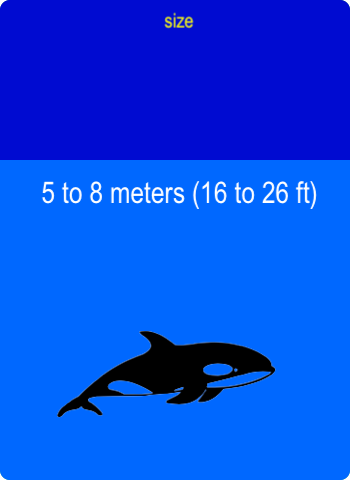
|
Just like the sperm whale, killer whales are not "true" whales at all - they are toothed whales. The typical "true" whale, such as blue and humpback whales, are baleen whales Toothed whales have conical shaped teeth used to grab fish, and are commonly referred to as "dolphins." Killer whales are more closely related to bottlenose dolphins than humpback whales, because they share the family Delphinidae. Many, but not all, toothed whales share the family Delphinidae.
Though they may not look it, killer whales are actually very well camouflaged in the water! Because they are dark on top, and light on their stomach, they have a type of camouflage called countershading. When viewing the whale from below, the light coloration of its stomach helps it blend in with the sunlight above them. When viewing the whale from above, the dark coloration of its back helps it blend in with the dark depths below.
Killer whales frequently inhabit coastal and offshore seas, particularly areas of cold-water upwelling. Killer whales can be found in oceans worldwide, though they are found in greater numbers in the Arctic and Antarctic. They will also congregate in areas of upwelling, but these areas can change seasonally.